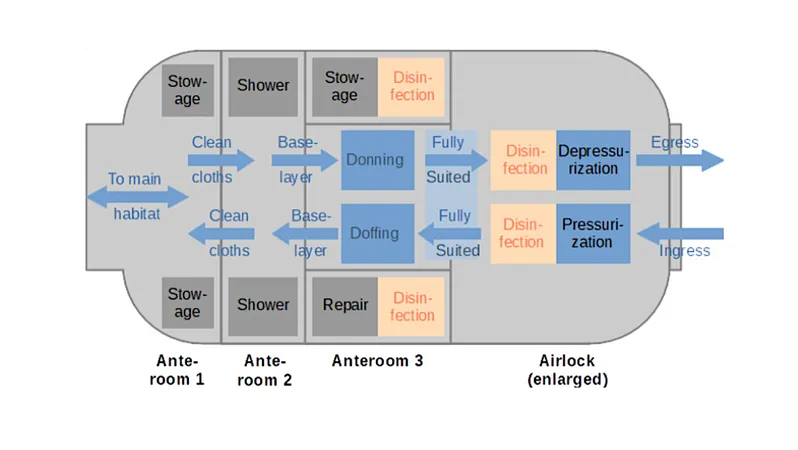
Revolutionary Airlock Design Could Safeguard Mars from Earthly Contamination!
2024-12-08
Author: Benjamin
As humanity eyes the Red Planet for exploration and potential colonization, the critical issue of protecting the Martian environment from contamination by terrestrial microbes has come to the forefront. This is particularly crucial in the quest for discovering indigenous life forms and understanding Mars' unique ecosystems.
While ambitious plans from both companies and space agencies aim for manned missions to Mars within the next decade, it’s alarming to note that current planetary protection measures only cater to unmanned spacecraft. This raises a significant dilemma: how can we ensure the integrity of Mars while pursuing human exploration?
Recent research proposes an innovative solution that revolves around a specially-designed airlock intended to mitigate the risks of microbial contamination. The study highlights that the most significant risk occurs when astronauts exit their habitat to venture onto the Martian surface. This is where conventional airlock designs fall short.
The proposed airlock concept integrates planetary protection features into a practical design tailored for human use. It comprises two pressure-tight doors with an additional three internal compartments, each designated for specific activities that enhance contamination control. These compartments include:
1. Suit-Up Area
A dedicated space for donning and repairing Extravehicular Activity (EVA) suits, possibly outfitted with suitports for ease of access.
2. Hygiene Compartment
Equipped with showers and facilities for maintaining astronaut hygiene, crucial for preventing microbial transfer.
3. Stowage Room
A secure area for indoor clothing and undergarments, ensuring that personal items do not inadvertently harbor contaminants.
This integrated airlock design not only consolidates various essential functions into a single module, drastically improving efficiency for Mars explorers, but it also aligns with the critical objective of protecting the Martian environment.
As we hurtle towards the dawn of manned Mars missions, such innovations are not just beneficial; they are imperative. Protecting Mars is now as much about our technological advancements as it is about our ethical responsibility to other worlds.
Stay tuned, as the quest for Mars continues to unfold, with new findings and concepts emerging that could change the game in our interplanetary exploration endeavors!









 Brasil (PT)
Brasil (PT)
 Canada (EN)
Canada (EN)
 Chile (ES)
Chile (ES)
 España (ES)
España (ES)
 France (FR)
France (FR)
 Hong Kong (EN)
Hong Kong (EN)
 Italia (IT)
Italia (IT)
 日本 (JA)
日本 (JA)
 Magyarország (HU)
Magyarország (HU)
 Norge (NO)
Norge (NO)
 Polska (PL)
Polska (PL)
 Schweiz (DE)
Schweiz (DE)
 Singapore (EN)
Singapore (EN)
 Sverige (SV)
Sverige (SV)
 Suomi (FI)
Suomi (FI)
 Türkiye (TR)
Türkiye (TR)